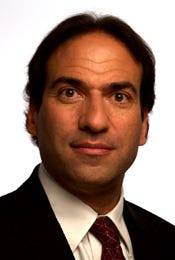March 1, 2022

Few in the automotive space will be sad to see 2021 in the rearview mirror. From supply disruptions to sourcing issues, 2021 was one of the most challenging years yet for the automotive industry.
Unfortunately, though, many of the issues that stunted success in 2021 have yet to be fully worked out, and thus the automotive space in 2022 – or at least the first half of it – likely will look much more like 2021 than how it appeared in pre-pandemic times.
This state of play is further being compounded by a large-scale shift among the automotive community towards battery-electric-vehicle investment. And thus, OEMs are placing more and more reliance on suppliers to not just help them solve issues with current technology but help them break new ground in the race for BEV supremacy.
With that in mind, here are some of the biggest challenges that suppliers are looking to navigate as we begin to move through 2022.
Battery Conservation Becomes King
Despite the growing interest and adoption of BEVs, one key thing stands in the way: battery performance.
In comparison to internal-combustion-engine vehicles, BEVs not only offer a shorter driving range, but also a much longer period to reach a full recharge. Even in the luxury market, many BEVs today offer only about 250 miles (402 km) of range and can take several hours to recharge if a supercharger isn’t available.

Joe_Harary (002)_0
Therefore, driving range has emerged as the focal area for OEMs when it comes to BEVs. In turn, this has resulted in OEMs exploring other alternatives including sodium, magnesium and other types of battery chemistries.
But because the viability of some these alternatives likely is still years away, OEMs are looking to find other ways to conserve battery power as much as possible as a way to extend range. This means that OEMs are applying pressure on their sourcing teams to find suppliers that can deliver more-efficient components and materials – such as smart glass or lightweight bodies that can reduce the drag on batteries – so that they maximize range.
Design, Comfort and Experience
The days are gone in automotive when a better passenger experience meant a few more cupholders or cushier seats. I recently heard a comment that today’s cars have more technology than the Apollo spacecrafts that went to the moon in the late 1960s and early 1970s. Whether it is in-car Wi-Fi or roofs with tunable tinting, vehicles now contain just as much technology as a house – if not more – and thus, passenger expectations have never been higher. To meet these growing demands, suppliers are continuing to be pushed to exceed their boundaries.
For example, at one time headrest-mounted infotainment screens were a huge breakthrough. Now, OEMs need to deliver screen and window technology that can dynamically brighten and tint to provide the best possible viewing experience regardless of lighting conditions. If they don’t, customers will turn to the competition for vehicles that can deliver on the finer points of passenger experience.
Trends of Tomorrow Drive Supplier Competition
Automotive is truly at a watershed moment in terms of innovation. For example, instead of body style or minor aesthetic upgrades dominating conversations in automotive circles, truly groundbreaking innovations – such as hydrogen fuel, autonomous vehicles, rapid charging and power conservation techniques and materials – are now the topics of discussion.
New features have to be useful and promote the mission of range extension. This puts pressure on OEMs to deliver better cars, but also puts pressure squarely on suppliers to keep up with the trends that are emerging to remain competitive.
This has resulted in a whole new deluge of investment in R&D and innovation in things such as nanotechnology, metallurgy and material science that can help suppliers be in a position to equip OEMs with the solutions that they need for today and tomorrow. Doing this, however, is easier said than done. Expect there to be serious competition among OEMs for the most cutting-edge suppliers, and also among suppliers themselves as they look to beat each other to the top of the innovation pyramid as we move through 2022.
Unfortunately, 2022 looks like it will bring a fair share of disruption with it. But with this disruption comes opportunity. And by working collaboratively and proactively, suppliers and their OEM partners can break new ground that will put them in a better position to remain competitive for years to come.
Joseph M. Harary is CEO of Research Frontiers, a publicly traded technology company and the developer of patented SPD-Smart light-control film technology.
About the Author
You May Also Like